James Park considers the factors that go into selecting the best arrow for the job
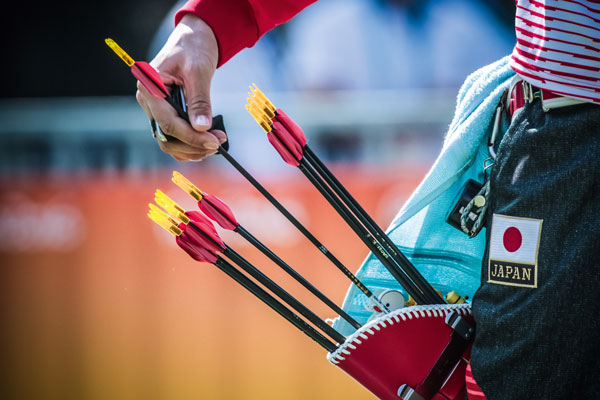
It is best to use a heavier rather than a lighter arrow point
I am frequently asked about optimum arrow selection. The fact is, it varies depending upon what type of archery you are considering, so let us consider, in this instance, target archery.
First, we need to think about the major reasons we lose score in target archery. Many of those reasons are common to all forms of archery, such as not aiming correctly, so we need to find those that depend upon the arrow choice given the circumstances of target archery. The factor of obvious importance is wind drift – almost always we will have some amount of wind on an outdoor target archery range, and it will affect where we need to aim to hit the centre of the target.
Importantly, the wind will not always be exactly the same strength and from the same direction, it will vary from arrow to arrow and in different parts of the target range. If the wind was constant we could simply make a simple sight correction and that would deal with it, but that is not the case here. If we can minimise the wind drift we can then more easily deal with the variation in aiming required for each shot, and then hopefully score more.
Second, we need to consider the physics behind wind drift so that we know how to minimise it. The arrow tries to align its longitudinal axis with the wind direction (yes, it is flexing and probably rotating in yaw and pitch as well, but for simplicity we will ignore those here). The wind direction as seen by the arrow is the sum of both the arrow’s forward motion and the wind at its current location down the range, so the arrow will be trying to align itself such that it probably does not have its longitudinal axis pointing in the target direction.
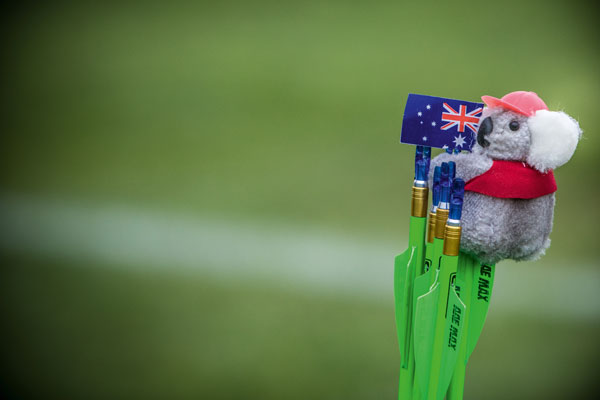
The total mass of the arrow also influences the wind drift, but not as strongly as the arrow’s diameter
A major force on the arrow is that due to aerodynamic drag. When the arrow is aligned with the effective wind direction, that drag is also aligned with the arrow’s longitudinal axis. Hence, if there is a side wind we then have the arrow travelling to the target a little side-on, with the aerodynamic drag having a component side-on to the direction to the target. That lateral component of the drag force gives us the wind drift.
Consequently, for a given arrow velocity as it leaves the bow we can reduce the wind drift by reducing the aerodynamic drag of the arrow.
Third, given that we want to reduce the arrow’s drag, we will need to understand a little about the factors that cause it. By far the largest component of the drag is due to the air moving over the surface of the arrow shaft. That accounts for about 70-75 per cent of the total drag for a typical target arrow. The fletchings contribute about 10-15 per cent, the nock about 10 per cent and the point about 5 per cent. So, we should now be in a position to design our arrow to minimise the wind drift.
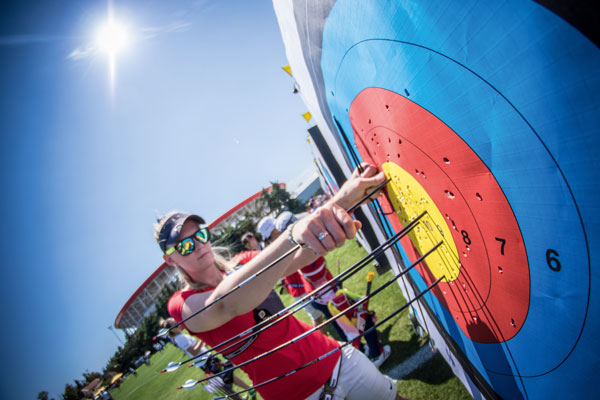
Minimising wind drift is a primary concern of outdoor target archers
The fletchings contribute drag from both their surface area and their frontal area, so for a given fletch area it is best to select a low-profile fletch. The nock strongly influences the arrow’s wake, so it is best to choose a nock with a small diameter and a good streamlined shape. While it can (and often does) influence the way air flows along the arrow shaft, the frontal area of the point contributes only a little to the drag.
Minimising drag from the surface of the arrow shaft is very important as it is the major contributor. This can be achieved by minimising the shaft’s surface area, but there are limits. We can reduce the surface area by reducing the arrow shaft diameter, but for a given arrow shaft stiffness we need to increase the wall thickness as we reduce the diameter. The limit is then when the wall thickness equals the shaft radius – we then have a solid rod. For the typical carbon fibre used in arrow shafts and an arrow spine of 400, we get to the solid rod when we have a shaft diameter of about 5mm. However, it is still necessary to be able to fit a point (and nock) to the shaft and that is usually achieved using a shank fitted down the centre of the shaft.
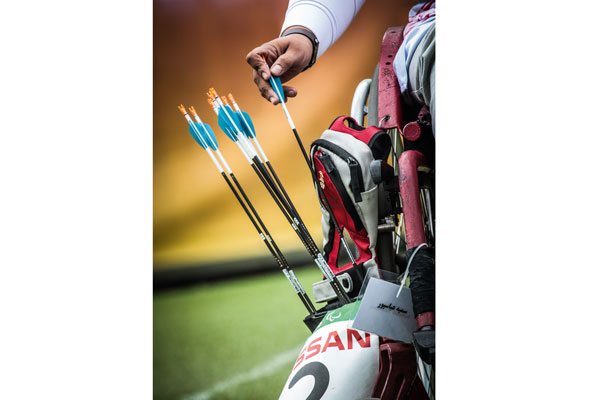
The shaft accounts for 70-75 per cent of the total drag on the arrow, so target archers typically choose the smallest possible
The point’s weakest area is where the external part joins the shank that fits inside the shaft. We need to make the shank diameter sufficiently large to be strong enough to avoid failures. If we choose, say, 3mm for the shank external diameter that then sets the minimum external diameter of the arrow shaft for the selected material. For carbon fibre and an arrow spine of 400 that minimum arrow shaft diameter will be a little more than 5mm. The material selection also sets the mass of the shaft, given that diameter. That is, then, the best we are able to do for the shaft.
The total mass of the arrow also influences the wind drift, but not as strongly as the arrow’s diameter. Greater arrow mass extracts a little more energy from the bow, which then slightly reduces the drift. Consequently it is best to use a heavier rather than a lighter arrow point.
All very interesting, but where does all this sit in relation to arrows that you can purchase?
We see just about every top recurve archer at major competitions such as the Olympic Games using X10 arrows. These arrows are sitting right at the minimum diameter described above. Protour and Nano Pro arrow shafts are also at about that same external diameter. Those three arrow types are, for a given arrow spine, at about the optimum shaft diameter to minimise wind drift for arrows constructed from carbon fibre. They are about the best you can do.
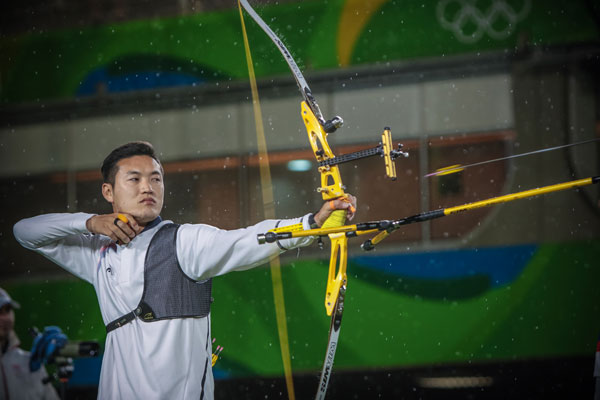
Almost every competitor at the top level such as the Olympics will use narrow diameter arrows like the X10
Considering the overall arrow, and supposing I need a spine of, say, about 400, and I wish to minimise wind drift for my target archery, what might I select? First, it would need to be one of the shaft types with that minimum external diameter. I could select, for example, an X10 size 380 or 410. I would use a full-mass 120 grain point to ensure I extracted as much energy from the bow as I could. I would use the smallest diameter pin nock that has a good shape – in this case the X10 pin nock if I was using a recurve bow as its diameter is about the same as the rear diameter of the X10 shaft (or perhaps a G pin nock for my compound bow). There are many fletch types I could select but, as noted above, to minimise drag from the frontal area I would want a low profile for the selected fletch side area.
In terms of the difference it makes, I have to say that wind drift is challenging to measure. However, I have done so in a number of ways, including using a very large wind tunnel. In one of my tests I shot Protour and Lightspeed arrows alternately using my compound bow and shooting machine at 70 metres on a day with a gusty side wind. The group sizes were such that I would have scored 25 points more over 36 arrows with the smaller diameter arrows. Without wind both arrow types grouped very well. Clever arrow selection can make a very large difference!
This article originally appeared in the issue 112 of Bow International magazine. For more great content like this, subscribe today at our secure online store www.myfavouritemagazines.co.uk

